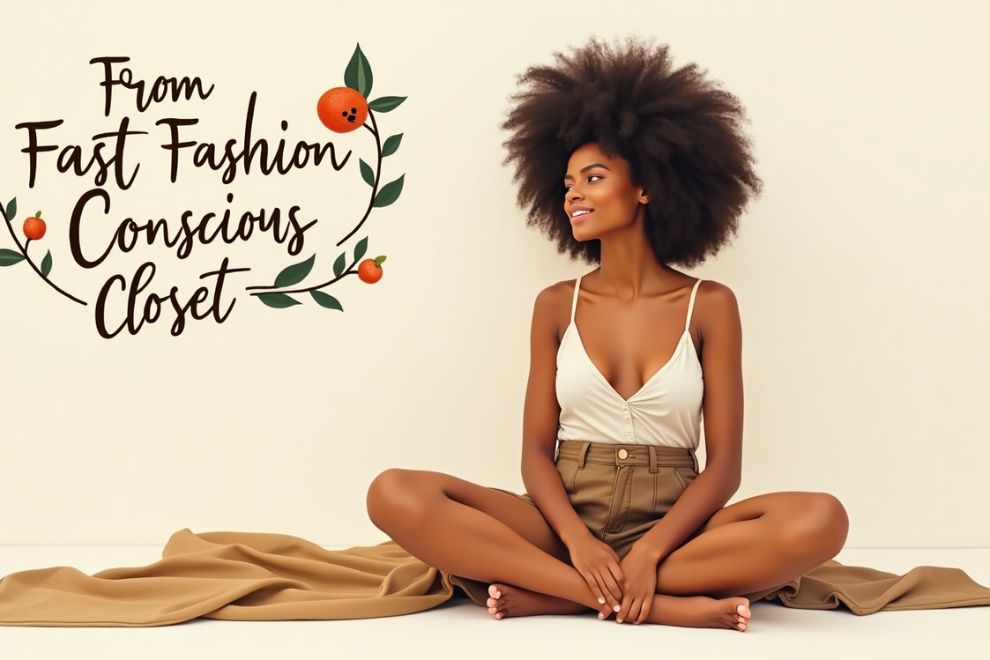Why I Ditched Fast Fashion
We live in a world where trends change by the week, online carts fill up at midnight, and “wear once” fashion hauls flood our feeds. I was caught in it too—trendy, affordable, and forgettable. But it left me with an overflowing closet, guilt about waste, and an identity crisis every time I got dressed.
That’s when I decided to pause, rethink, and take on a 30-day fashion detox challenge—a commitment to break up with fast fashion and rebuild a conscious closet from the inside out.
Week 1: Facing the Truth in My Closet
The first step? A full wardrobe audit.
I pulled everything out—every impulse buy, every “just in case” piece, every forgotten duplicate. What shocked me was this:
- I wore only 30% of my closet regularly.
- I had 15+ items still with tags on.
- Many clothes were made from synthetic, non-biodegradable fabrics.
I realized my wardrobe wasn’t just cluttered—it was a reflection of my unconscious consumption.
Lesson: Awareness is the foundation of change.
Week 2: No Buying, Just Reflecting
I made a strict rule: No new purchases for 30 days.
Instead of browsing online stores, I browsed my closet. I began to restyle old outfits, experiment with layering, and even swapped a few pieces with friends.
I also learned to track emotional triggers: I used to shop when I was bored, anxious, or just wanted a “treat.” Recognizing those habits was liberating.
Lesson: Shopping isn’t always about need. Sometimes, it’s about avoiding discomfort.
Week 3: Researching Sustainable Alternatives
Now that I had paused my buying habits, I used this week to educate myself:
- What is fast fashion really doing to the planet?
(Hint: 10% of global carbon emissions, and landfills overflowing with textile waste.) - What fabrics are eco-friendly?
Think organic cotton, hemp, linen, and recycled polyester. - What brands align with my values?
I discovered labels like ThredUP, No Nasties, and Pact—brands that care about fair wages and clean production.
Lesson: Knowledge fuels smarter choices—and real empowerment.
Week 4: Building a Conscious Closet Plan
In the final stretch of the detox, I wasn’t just restraining myself—I was redefining my relationship with fashion.
Here’s what I planned going forward:
- Buy Less, Choose Better: Invest in versatile, high-quality pieces.
- Support Ethical Brands: Vote with my wallet for companies that align with my values.
- Secondhand First: Thrifting and swapping are now go-to options.
- Set Style Intentions: Curate my wardrobe around timeless essentials, not TikTok trends.
- Practice Gratitude for Clothes: Repair, reuse, repurpose.
Lesson: A conscious closet is not about owning nothing—it’s about owning intentionally.
Results After 30 Days
- I saved money.
- I created over 20 “new” outfits with old clothes.
- I felt less anxiety when getting dressed.
- I made peace with slower fashion.
Most importantly, I found my style confidence not in something new, but in something meaningful.
Final Thoughts: Detox Isn’t Deprivation—It’s Clarity
The journey from fast fashion to a conscious closet isn’t about perfection. It’s about progress. It’s about remembering that your wardrobe choices impact more than your mirror—they impact workers, ecosystems, and future generations.
If you’re tired of the fashion rat race, consider a 30-day style detox. You might discover that everything you needed was already hanging in your closet.
Bonus: 5 Quick Tips to Start Your Own Fashion Detox
- Don’t buy anything new for 30 days.
- Do a full closet audit and donate unused items.
- Create a capsule wardrobe challenge for the month.
- Follow sustainable fashion creators on Instagram or YouTube.
- Journal how you feel each time you resist a shopping urge.


